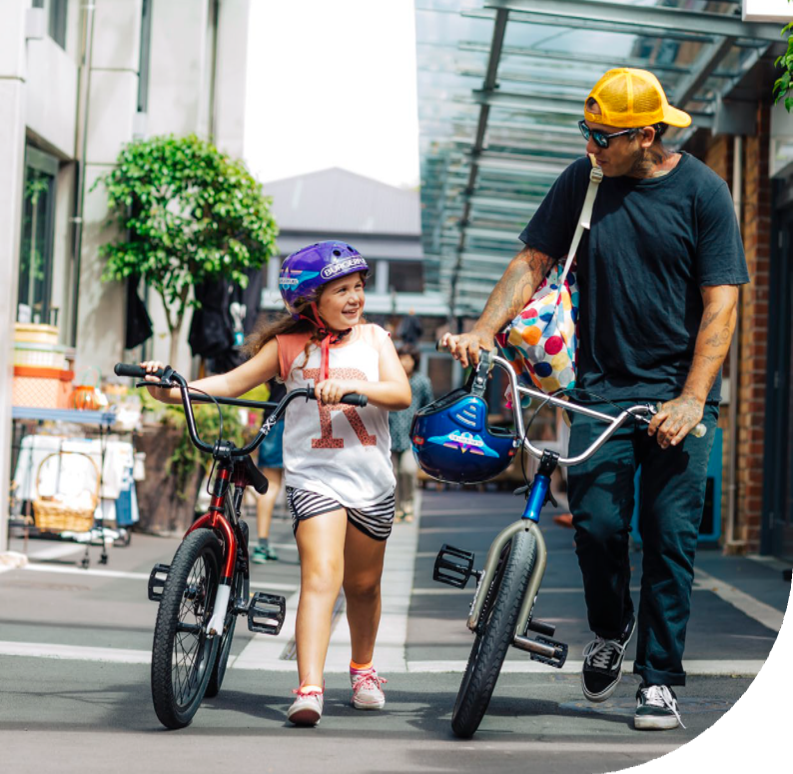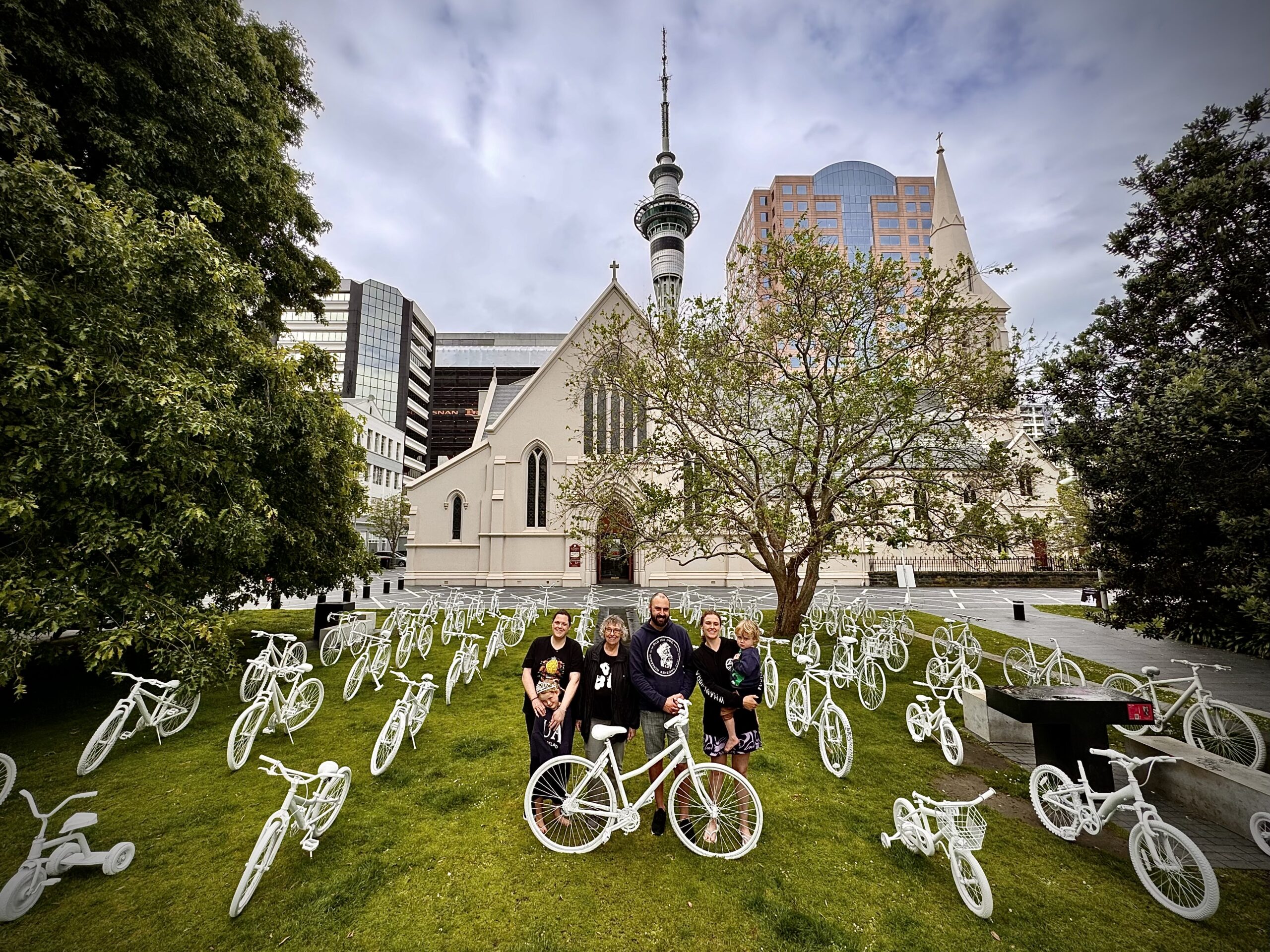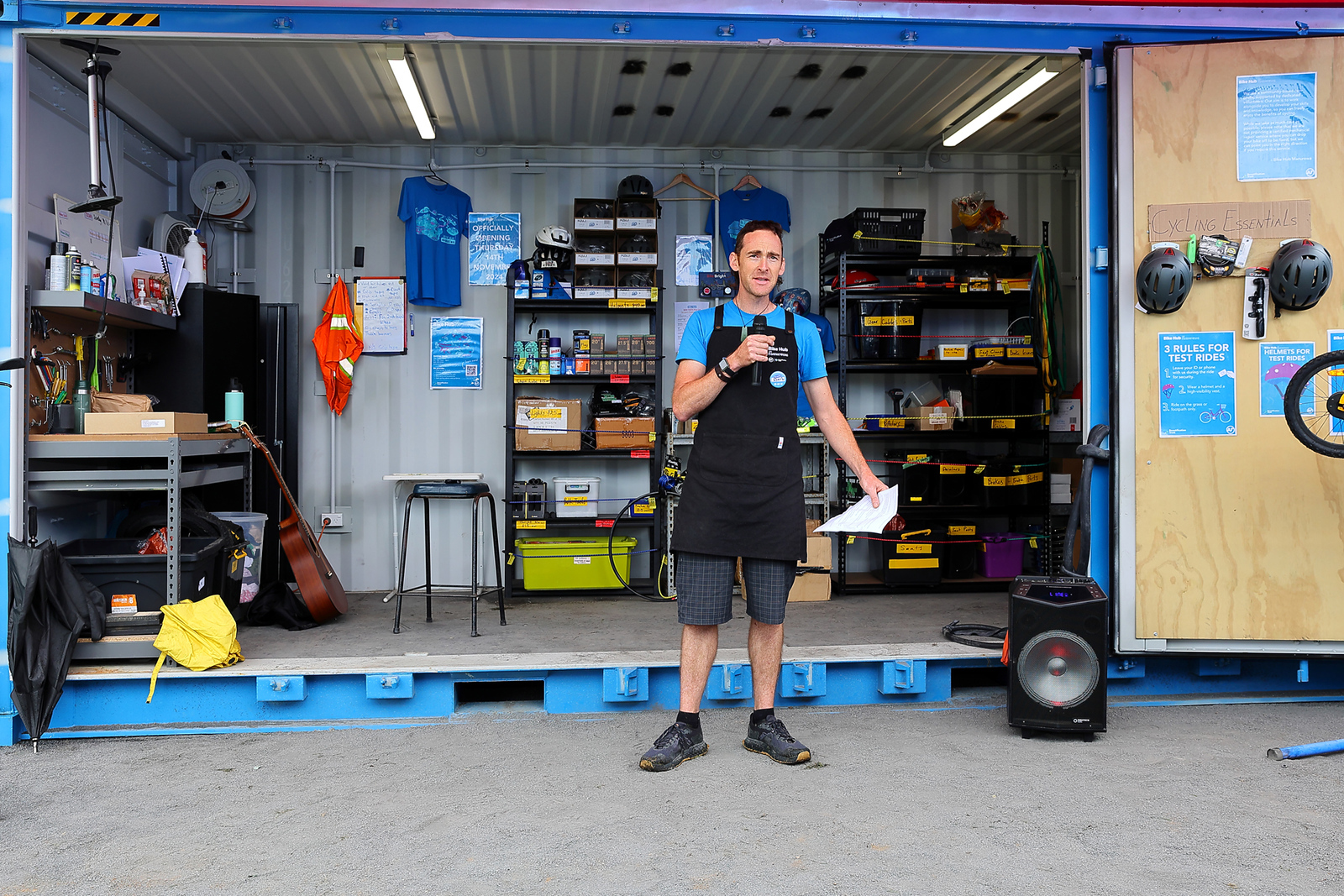The Minister of Transport is proposing law changes to make it easier for local authorities (like councils and Auckland Transport) to make street changes that support public transport, active travel and placemaking.
For example, the law changes would make it easier for authorities to create a pop up cycle lane trial and to keep the trial up for a longer period of time (up to two years). After this time, feedback from the community could help the authority to decide whether to make it permanent, to make some key changes to the design, or to remove it altogether. This gives the community the ability to fully experience the street change, gives them time to adjust and to change their own behaviour to try it out (i.e. building confidence to commute by bike) as well as to notice the wide range of effects it has (i.e. that more children are now cycling to school, that the street has become quiet enough to hear the birds).
Submissions close Monday 19 September so don’t delay in giving your feedback.
Summary of the proposed changes
The proposed regulatory changes include:
- a new ‘Street Layouts’ land transport rule for local authorities, as road controlling authorities (RCAs), to use for changing street layouts, piloting street changes, restricting vehicles, establishing Community Streets and School Streets, and for deciding on other street changes
- amending sections in the Local Government Act 1974 (LGA1974) covering pedestrian malls, transport shelters (like bus shelters), and temporary road closures
- changes to other rules and regulations so that local authorities can reduce speed limits as part of pilots, trial Traffic Control Devices (TCDs) more effectively, and to make legislation more accessible.
How to make a submission
You can find the full Reshaping streets consultation document here. If you would like an explanation of some of the words and phrases used you can have a look here.
If you are up to speed on the proposed changes then jump in and make your submission through this button:
Read on to learn why these changes are important, and for ideas from our submission guide.
Why are these law changes being proposed?
We need to make it safer, quicker, and more attractive for people to walk, bike, use mobility devices, scoot, skate, and take public transport in our towns and cities. All these activities take place on streets – but most streets in New Zealand do not give enough dedicated space or priority to these ways of travelling.

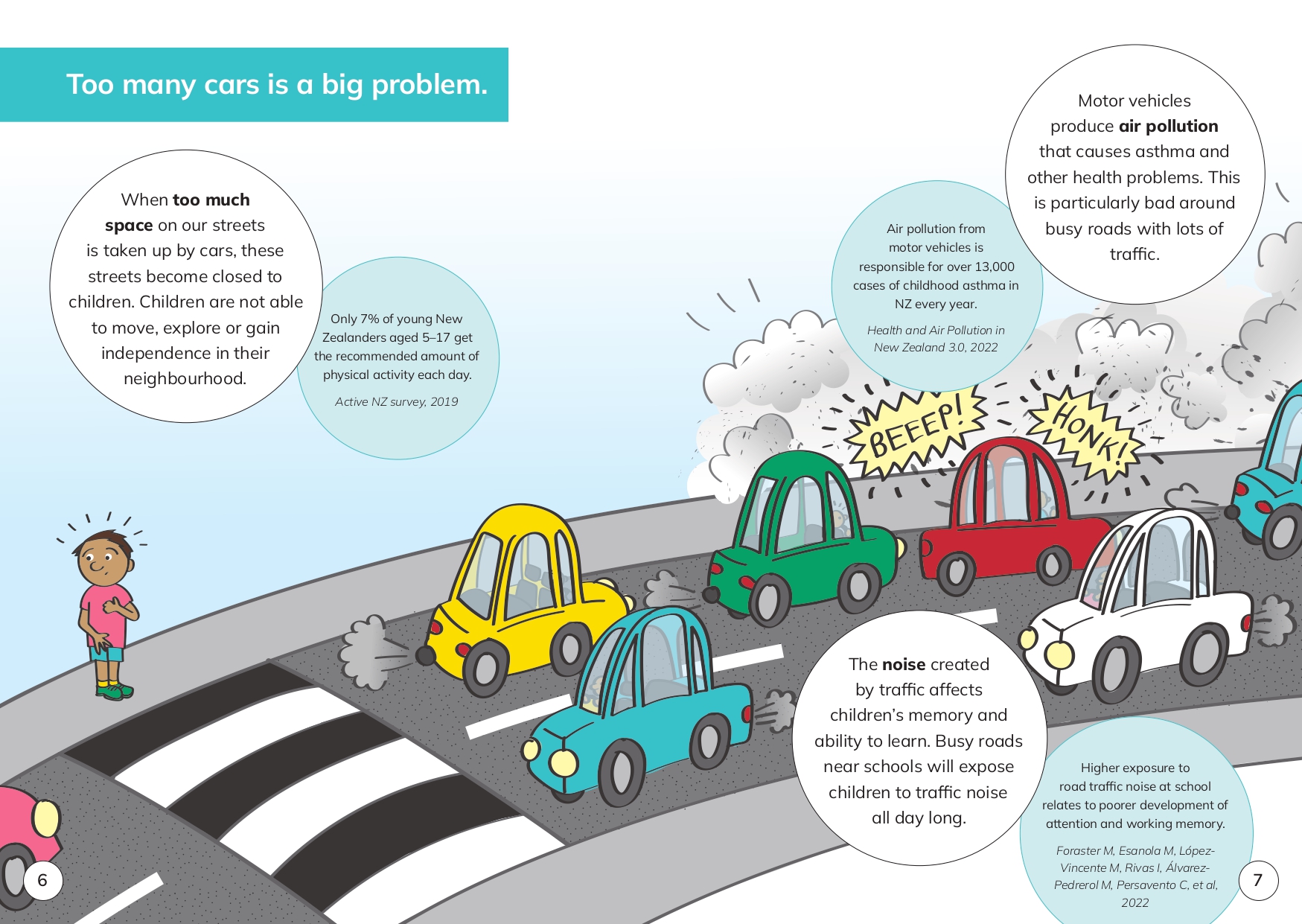
Street changes that support public transport and active travel will enable us to meet our emissions reduction targets. They can also make places more accessible for people, reduce deaths and serious injuries from transport, improve public health, and create well-functioning urban areas that are good for people and businesses.
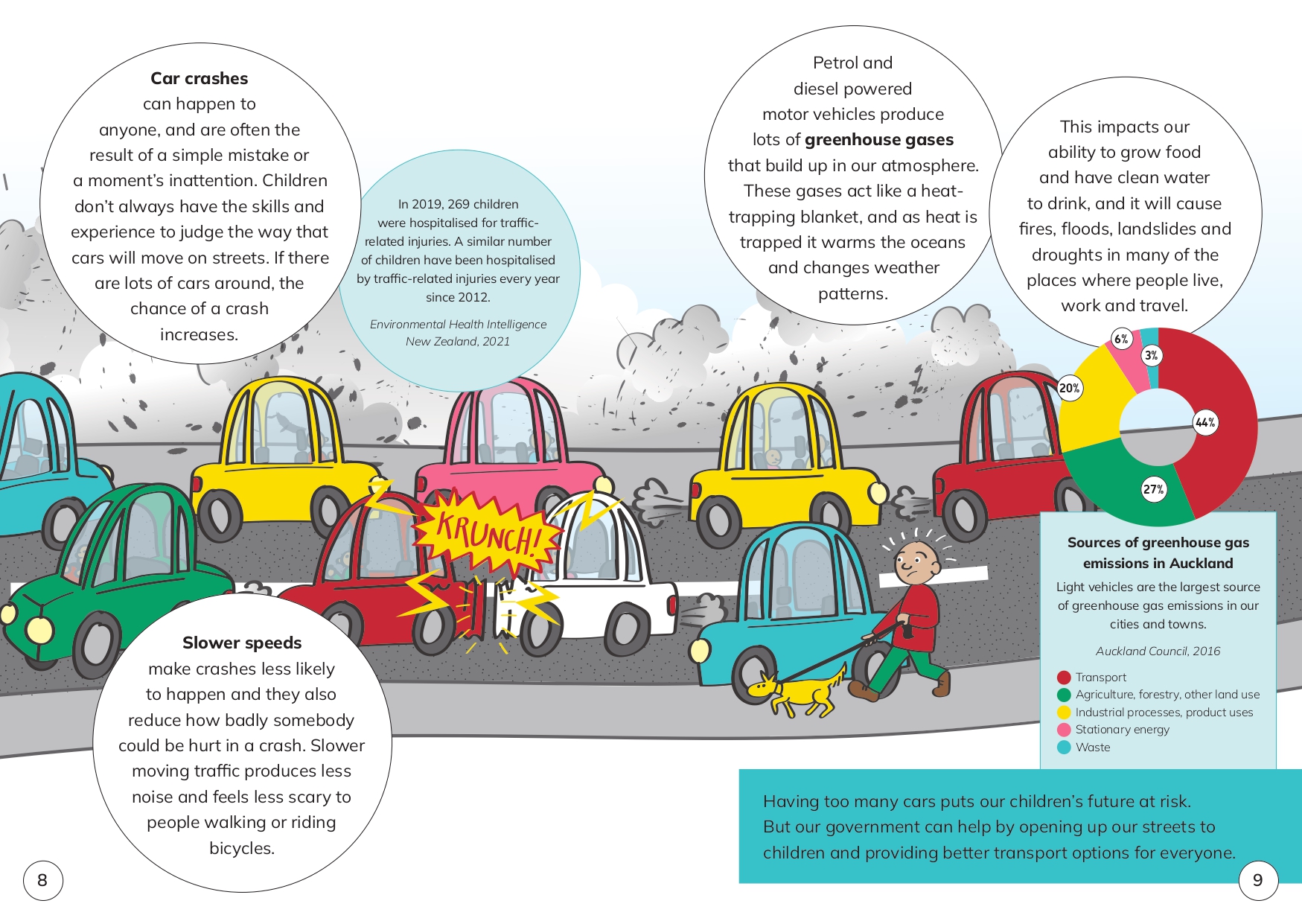
In May 2022, the Government released its first Emissions Reduction Plan (ERP) . This plan includes a target to ‘reduce total Kilometres travelled by the light vehicle fleet by 20 percent by 2035 through improved urban form and providing better travel options, particularly in our largest cities.’
To meet this target, the Emissions Reduction Plan includes actions to accelerate public transport, active travel, and placemaking. One of these actions is to make it simpler and quicker to make street changes. Law changes are needed because the current system does not enable local authorities to make street changes at the pace and scale required to meet our targets.
This consultation document summarises law changes that the Government is considering. The proposed changes will support the delivery of other actions in the Emissions Reduction Plan for public transport, walking, cycling, using mobility devices, school travel, and social outcomes.
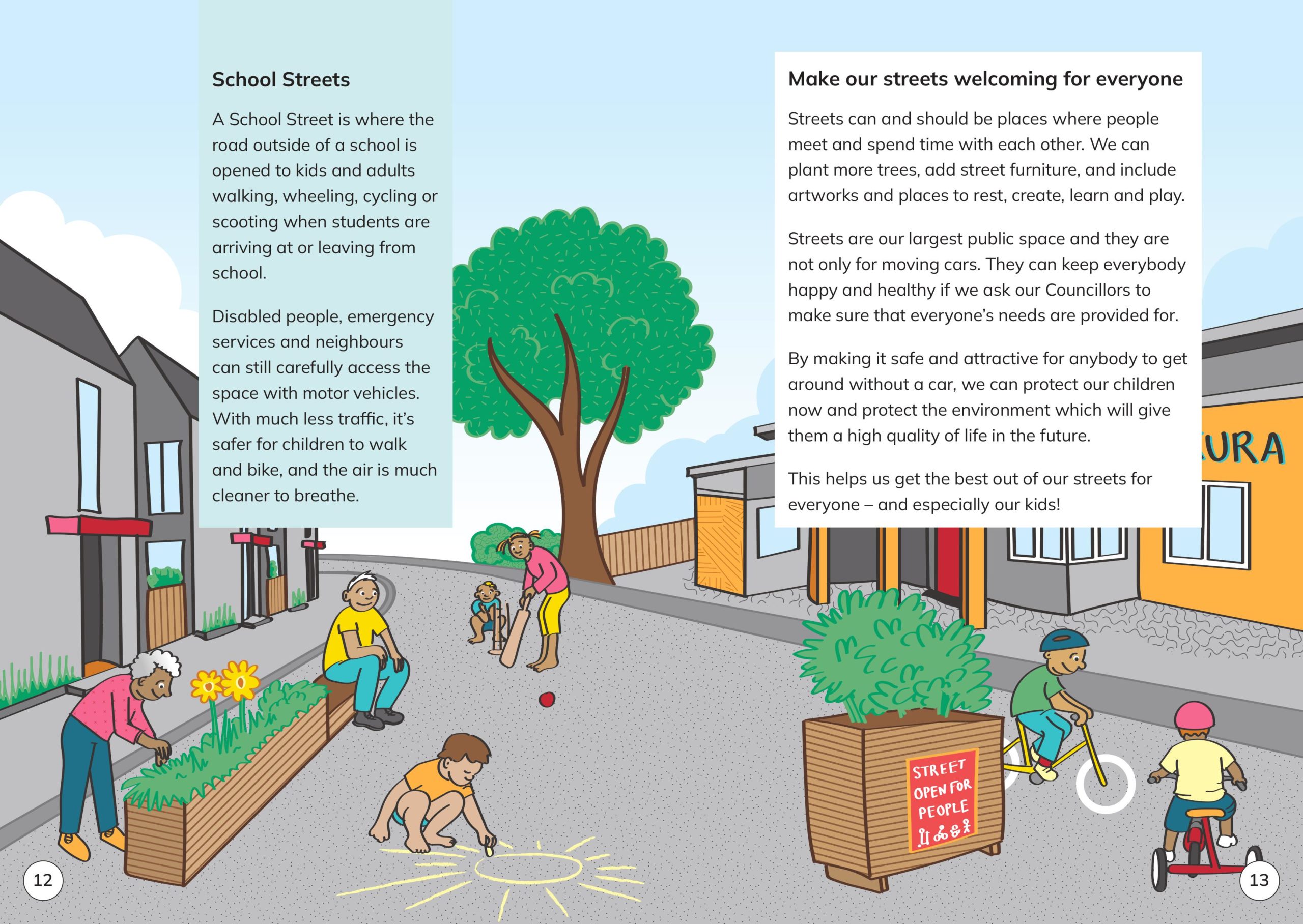
Laws need to reflect the ways communities use, or could use, streets. Streets are not just spaces that people move or travel through. Streets are public places that can be used for different purposes. People live on streets, they shop on streets, they meet friends and family on streets, and they may even play on the street if it is safe.
While central government intends to make it easier to make street changes, local authorities will still be engaging with their communities when it comes time to deliver any changes on the ground.
Street changes are needed for multiple reasons:
- Streets need to be safe for everyone
- Streets need to support public health
- Street changes are needed to support shifts to higher-density living
Recent initiatives such as the National Policy Statement on Urban Development (NPSUD) and changes driven by the Resource Management (Enabling Housing Supply and Other Matter) Amendment Act 2021 will enable much more intensification in existing urban areas. This will encourage more people to live in urban areas and travel through them in different ways. Streets that prioritise public transport, mobility device use, walking, and cycling make efficient use of urban space, and maximise how many people can travel through the space available. Placemaking improvements on streets, including green spaces and areas to rest or play, can make towns and cities more fun, live-able, vibrant, and accessible.
Summary of the proposed changes
There are 18 proposed changes under seven categories; pilot street changes, filtering and restricting traffic, school streets, community streets ,closing roads for other functions and events, pedestrian malls, and transport shelters.
Overall Bike Auckland believes the proposed changes speed up the processes, make it significantly easier to implement changes, and allow the proposals time to change people’s minds and behaviours. They do this by allowing longer timeframes for the impacts of pilot changes to be fully realised and significantly reduce the time taken to create School Streets in partnership with local schools.
Specific Question Guidance
Click on the ‘Make your submission now’ button and open the consultation document in a new tab or window. You can use our suggestions below for inspiration for your answers. As always, it’s best to use your own words, and to share your own views in your answers.
Initialisms:
TCDs – Traffic Control Devices
RCAs – Road Controlling Authorities
LGA – Local Government Act
PILOT STREET CHANGES
Proposal 1A: Provide RCAs with new powers and requirements to install pilots, and set requirements for how to install them
Fully supported. A longer timeframe will enable the benefits and impacts to be fully realised before a decision is made about whether to make the changes permanent or return to the original. Currently, public and political pressure results in ‘experimental diversions’ to be prematurely cancelled.
Before installing a pilot, Road Controlling Authorities must consider integration with the wider walking and cycling network.
Proposal 1B: Enable pilots to be used as a form of consultation, by using feedback collected during the pilot to consider whether to make street changes permanent
Fully supported. Quite often members of the public do not quite understand plans on paper. A physical manifestation provides the best opportunity for the public to understand and appreciate the changes.
Proposal 1C: Enable pilots to be installed for up to two years
Fully supported and timeframe is suitable. This allows time to change the habits of the people who are against or unsure about the changes. This also allows time for local stakeholders to record the benefits of calmer neighbourhoods.
Proposal 1D: Amend the LGA1974 to make it clear that RCAs should not use the provision for ‘experimental diversions’ when piloting street changes
Targeted at Road Controlling Authorities so not relevant.
Proposal 1E: Allow RCAs to lower the speed limit to support a pilot, in areas with a posted speed limit under 60km/h, during the pilot.
Fully supported. Lower speeds are essential to, and consistent with, pilots to create safe places and calmer neighbourhoods.
Proposal 1F: Update rules for trialling TCDs, so that RCAs can trial TCDs as part of pilots and choose how they notify people about TCD trials.
Fully supported. Traffic Control Device rules must be updated so that they cannot be challenged in a court of law. This would jeopardise the entire process.
FILTERING AND RESTRICTED TRAFFIC
Proposal 2A: Enable RCAs to install modal filters if the objects they use are safe
- Fully supported. This will significantly reduce the time required to install modal filters.
- Fully supported. This will significantly reduce the time required to manufacture signs and also ensure that respective signs are consistent throughout the motu (Island).
Proposal 2B: Ensure legislation provides clear powers for RCAs to filter traffic, by removing the requirement in the LGA1974 that facilities built on roads cannot, in the opinion of a council, ‘unduly impede vehicular traffic entering or using the road’
Fully supported. If this is not implemented it will not be effective in preventing vehicular traffic from using specific sections of the road network.
Proposal 2C: Enable RCAs to restrict or prohibit the use of some or all motor vehicles on specified roadways to support public transport use, active travel, health and safety, emissions reductions, and/or to create public spaces that promote community well-being
Fully supported. There is limited available road space. Therefore the prohibition of motor vehicles, when considered necessary, will enable limited road space to be reallocated to active and passenger transport modes.
Proposal 2D: Provide RCAs with an explicit power to install TCDs
Fully supported. Again time required to install Traffic Control Devices will be significantly reduced.
SCHOOL STREETS
Proposal 3: Establish powers and requirements for RCAs to create School Streets in partnership with local schools
Fully supported. Again time to implement will be significantly reduced. These measure will also ensure that the restrictions installed are effective and improve safety for children walking and cycling to and from school.
COMMUNITY STREETS
Proposal 4: Establish clear powers and requirements for residents to hold Community Streets, provided they have approval from RCAs
Fully supported. It is important that communities learn to interact on a larger scale and the road reserve provides an appropriate space for these activities to be undertaken. The proposal empowers communities, based on their local knowledge and requirements, to take the initiative to create welcoming and safe spaces to bring local residents together at allocated times, without the fear of private vehicles travelling through.
Proposed requirements are satisfactory.
CLOSING ROADS FOR OTHER FUNCTIONS AND EVENTS
Proposal 5A: Allow RCAs to close roads for reoccurring events, by removing the 31-day limit per year for road closures in the LGA 1974
Fully supported. Our response is as per Proposal 4 (above). There should not be a specific limit to the number of regular events.
Proposal 5B: Bring together powers and requirements to close roads for events in one piece of legislation and update notification requirements so that RCAs can notify the public in any way that they consider appropriate at least two weeks before an event.
Fully supported vis-à-vis one piece of legislation. This would rationalise the requirements, remove current and potential inconsistencies and make it easier to implement and administer.
Fully support updating notification requirements. All events are different and might require specific and appropriate notification processes.
The Streets Layout rule will mean that streets will be safe for everyone during events. Insurance requirements could be reduced. However, it is noted that Road Controlling Authorities do not insure assets within the road corridor. There is a large amount of damage caused to road infrastructure, willfully or accidentally, and if perpetrators are not caught Road Controlling Authorities pay for repair to damages.
PEDESTRIAN MALLS
Proposal 6A: Remove the requirement for local authorities to use the special consultative procedure when establishing pedestrian malls. Instead, they must apply the consultation principles in the LGA 2002.
Fully supported.
Proposal 6B: Remove the ability for people to appeal to the Environment Court when a pedestrian mall is being created. People would be able to challenge the installation of a pedestrian mall through judicial review.
Fully supported. Consistency is important to ensure changes are not open to legal challenges.
Proposal 6C: Shift legislative provisions for pedestrian malls to the proposed Street Layouts rule
Fully supported. For the same reasons set out above.
TRANSPORT SHELTERS
Proposal 7: Remove special notification requirements for creating transport shelters. Instead, RCAs would be able to publicly consult on transport shelters in the same way they do for other features, like bus stops.
Fully supported. Transport shelters (good quality designed facilities) are important in the Public Transport journey. Inadequate transport shelters is one of the key factors in deterring people from using Public Transport. With the current process there are too many local interests and ‘nimbyism’ delaying the implementation of bus stops and transport shelters.
IMPLEMENTATION APPROACH
The process is fully supported.
Reshaping streets submission close Monday 19 September 2022.

